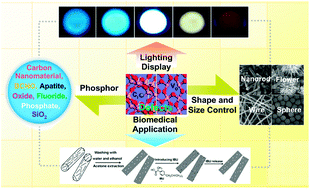Luminescent materials have found a wide variety of applications, including information displays, lighting, X-ray intensification and scintillation, and so on. Therefore, much effort has been devoted to exploring novel luminescent materials so far. In the past decade, defect-related luminescent materials have inspired intensive research efforts in their own right. This kind of luminescent material can be basically classified into silica-based materials, phosphate systems, metal oxides, BCNO phosphors, and carbon-based materials. These materials combine several favourable attributes of traditional commercially available phosphors, which are stable, efficient, and less toxic, being free of the burdens of intrinsic toxicity or elemental scarcity and the need for stringent, intricate, tedious, costly, or inefficient preparation steps. Defect-related luminescent materials can be produced inexpensively and on a large scale by many approaches, such as sol–gel process, hydro(solvo)thermal reaction, hydrolysis methods, and electrochemical methods. This review article highlights the recent advances in the chemical synthesis and luminescent properties of the defect-related materials, together with their control and tuning, and emission mechanisms (solid state physics). We also speculate on their future and discuss potential developments for their applications in lighting and biomedical fields.


 Please wait while we load your content...
Please wait while we load your content...